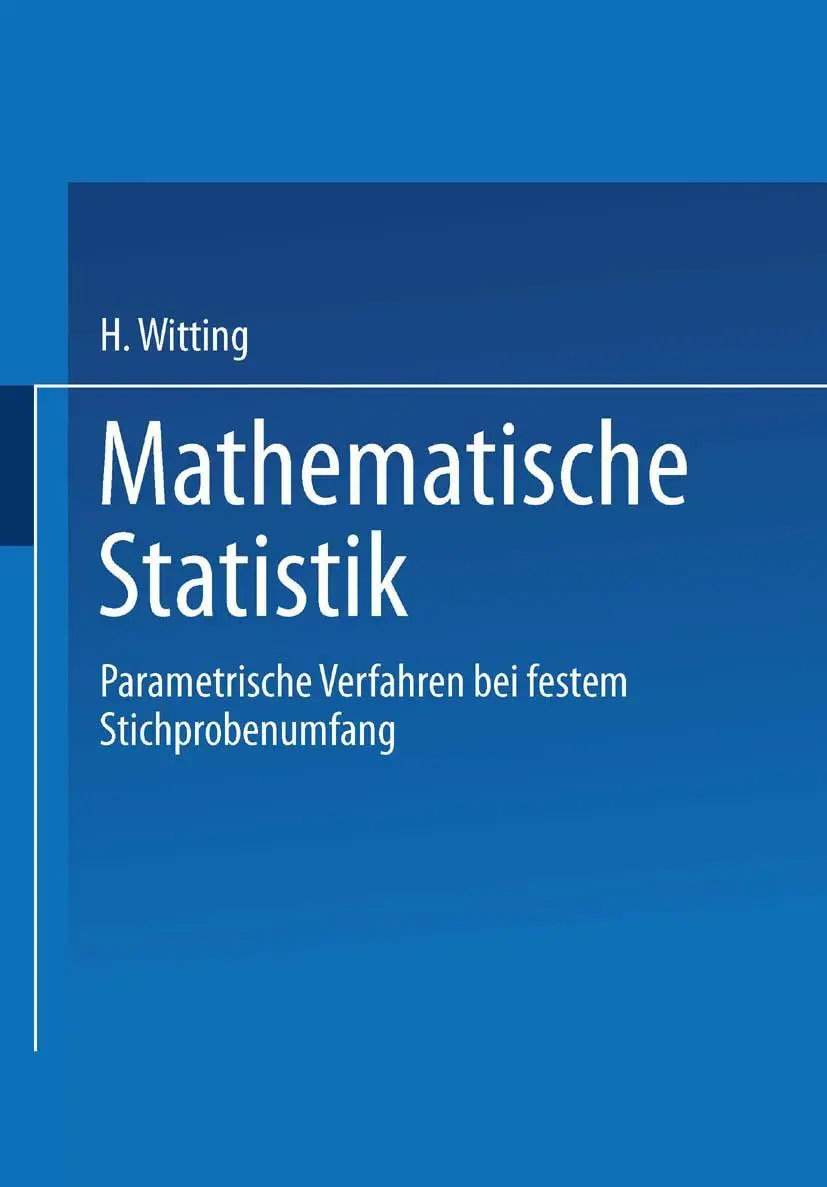Dekorationsartikel gehören nicht zum Leistungsumfang.
Sprache:
Englisch
41,25 €
Versandkostenfrei per Post / DHL
Lieferzeit 2-4 Werktage
Kategorien:
Beschreibung
Multilevel Modeling is a concise, practical guide to building models for multilevel and longitudinal data. Author Douglas A. Luke begins by providing a rationale for multilevel models; outlines the basic approach to estimating and evaluating a two-level model; discusses the major extensions to mixed-effects models; and provides advice for where to go for instruction in more advanced techniques. Rich with examples, the Second Edition expands coverage of longitudinal methods, diagnostic procedures, models of counts (Poisson), power analysis, cross-classified models, and adds a new section added on presenting modeling results. A website for the book includes the data and the statistical code (both R and Stata) used for all of the presented analyses.
Multilevel Modeling is a concise, practical guide to building models for multilevel and longitudinal data. Author Douglas A. Luke begins by providing a rationale for multilevel models; outlines the basic approach to estimating and evaluating a two-level model; discusses the major extensions to mixed-effects models; and provides advice for where to go for instruction in more advanced techniques. Rich with examples, the Second Edition expands coverage of longitudinal methods, diagnostic procedures, models of counts (Poisson), power analysis, cross-classified models, and adds a new section added on presenting modeling results. A website for the book includes the data and the statistical code (both R and Stata) used for all of the presented analyses.
Über den Autor
Douglas A. Luke is Professor and Director of the Center for Public Health Systems Science at the Brown School at Washington University in St. Louis. Dr. Luke is a leading researcher in the areas of public health policy, imple- mentation science, and systems science. Most of the work that Dr. Luke di- rects at the Center focuses on the evaluation, dissemination, and implemen- tation of evidence-based public health policies. During the past decade, Dr. Luke has worked on applying systems science methods to important public health problems, especially social network analysis. He has published two systems science review papers in the Annual Review of Public Health, and the first study to employ new statistical network modeling techniques on public health data was published in the American Journal of Public Health in 2010. He was also a member of a National Academy of Sciences panel that produced a recent report, Assessing the use of agent-based models for tobacco regulation, which provided the FDA and other public health scien- tists with guidance on how best to use computational models to inform to- bacco control regulation and policy. Dr. Luke directs the doctoral progam in Public Health Sciences at the Brown School, where he also teaches doctoral courses in multilevel and longitudinal modeling, social network analysis, and philosophy of social science. Dr. Luke received his Ph.D. in clinical and community psychology in 1990 from the University of Illinois at Urbana- Champaign
Inhaltsverzeichnis
Series Editor¿s Introduction
About the Author
Preface
1. The Need for Multilevel Modeling
Background and Rationale
Theoretical Reasons for Multilevel Models
Statistical Reasons for Multilevel Models
Scope of Book
Online Book Resources
2. Planning a Multilevel Model
The Basic Two-Level Multilevel Model
The Importance of Random Effects
Classifying Multilevel Models
3. Building a Multilevel Model
Introduction to Tobacco Voting Data Set
Assessing the Need for a Multilevel Model
Model-building Strategies
Estimation
Level-2 Predictors and Cross-Level Interactions
Hypothesis Testing
4. Assessing a Multilevel Model
Assessing Model Fit and Performance
Estimating Posterior Means
Centering
Power Analysis
5. Extending the Basic Model
The Flexibility of the Mixed-Effects Model
Generalized Models
Three-level Models
Cross-classified Models
6. Longitudinal Models
Longitudinal Data as Hierarchical: Time Nested Within Person
Intra-individual Change
Inter-individual Change
Alternative Covariance Structures
7. Guidance
Recommendations for Presenting Results
Useful Resources
References
About the Author
Preface
1. The Need for Multilevel Modeling
Background and Rationale
Theoretical Reasons for Multilevel Models
Statistical Reasons for Multilevel Models
Scope of Book
Online Book Resources
2. Planning a Multilevel Model
The Basic Two-Level Multilevel Model
The Importance of Random Effects
Classifying Multilevel Models
3. Building a Multilevel Model
Introduction to Tobacco Voting Data Set
Assessing the Need for a Multilevel Model
Model-building Strategies
Estimation
Level-2 Predictors and Cross-Level Interactions
Hypothesis Testing
4. Assessing a Multilevel Model
Assessing Model Fit and Performance
Estimating Posterior Means
Centering
Power Analysis
5. Extending the Basic Model
The Flexibility of the Mixed-Effects Model
Generalized Models
Three-level Models
Cross-classified Models
6. Longitudinal Models
Longitudinal Data as Hierarchical: Time Nested Within Person
Intra-individual Change
Inter-individual Change
Alternative Covariance Structures
7. Guidance
Recommendations for Presenting Results
Useful Resources
References
Details
| Erscheinungsjahr: | 2020 |
|---|---|
| Genre: | Importe, Soziologie |
| Rubrik: | Wissenschaften |
| Medium: | Taschenbuch |
| Inhalt: | Kartoniert / Broschiert |
| ISBN-13: | 9781544310305 |
| ISBN-10: | 1544310307 |
| Sprache: | Englisch |
| Einband: | Kartoniert / Broschiert |
| Autor: | Luke, Douglas A. A. |
| Auflage: | 2. Auflage |
| Hersteller: | SAGE Publications, Inc |
| Verantwortliche Person für die EU: | preigu, Ansas Meyer, Lengericher Landstr. 19, D-49078 Osnabrück, mail@preigu.de |
| Maße: | 216 x 140 x 9 mm |
| Von/Mit: | Douglas A. A. Luke |
| Erscheinungsdatum: | 07.05.2020 |
| Gewicht: | 0,186 kg |












